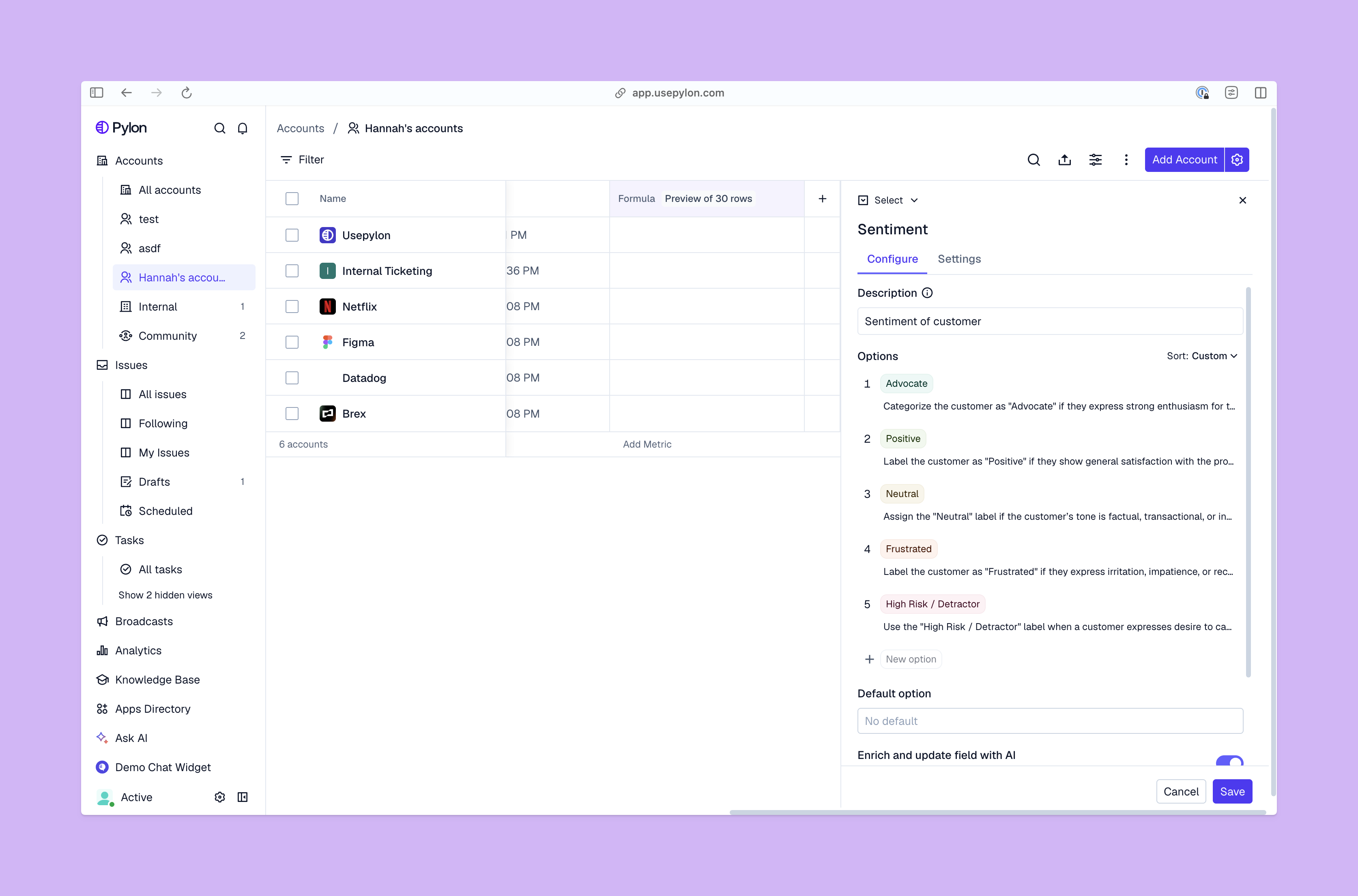How Accurate Churn Prediction Helps You Improve Retention
Discover key methods and strategies for predicting and managing customer churn. Learn how to improve retention and support sustainable business growth.
Your team works hard to close new accounts, but you still need to keep those customers engaged in the long-term. If customers start leaving faster than you can win new deals, it limits how much you can scale and drains resources.
Churn prediction gives you early insights on who might leave and why, so your team can act before you lose too much recurring revenue. By examining behavioral and transactional data, you can do a customer churn analysis to understand which accounts need attention and how to improve customer satisfaction.
There are many ways to build a good churn prediction model, depending on your team’s goals and resources. This guide explains the basics of churn modeling, explores a few techniques, and shows how your team can act on these predictions.
Understanding Churn and Its Impact on Your Company
Customer churn measures how many active accounts stop using your product or service over a given period of time.
There are two main types of churn risk:
- Voluntary churn is when customers decide to cancel their contract due to poor experiences, or when they’re swayed by competitors.
- Involuntary churn happens when there are payment issues or technical errors that cause customers to leave.
Both types of churn impact your long-term customer relationships, but they need different solutions. Lowering voluntary churn means improving engagement and SaaS customer support, but addressing involuntary churn means fixing bugs and implementing automated issue tracking and responses.
Foundations of Customer Churn Prediction

Customer churn prediction calculates the likelihood that a given customer will leave within a specific time period, like the next 30 or 90 days. To do an accurate analysis, you’ll need to find patterns in historical data, so you can compare customers who stick around to those who’ve already left. This helps support teams understand which accounts might leave and when.
While every customer churn dataset will be a little different, there are some common metrics that show reduced engagement and satisfaction. These customer support KPIs work best when you review them together, because they can expose how different factors influence each other
To get started, you’ll want to analyze:
- Customer engagement levels. Usage data will show you whether customers are actually using your product.
- Transaction histories. You likely want to check in with accounts who’ve missed multiple payments.
- Support trends. If an account keeps experiencing long resolution times, they’re more likely to report lower satisfaction.
- Relationship length. Accounts that have been using your product for a long time but show decreasing activity might need attention. Newer accounts with low engagement could signal onboarding issues.
- Customer feedback. Getting direct feedback from surveys can help you identify the problems behind KPI issues.
Common Churn Prediction Models and Techniques
Churn prediction can use a range of modeling techniques, from straightforward trend analysis to advanced machine learning strategies. Each approach helps teams understand customer behavior from a different angle.
Common models include:
- Logistic regression. This is a basic statistical model that calculates how certain factors — like the level of account activity or the number of open support tickets — affect churn.
- “Decision tree” models like random forests and gradient boosting. These approaches can uncover more detailed behavioral patterns and show how multiple signals combine to influence customer decisions.
- Survival analysis. This model estimates how long customers will stay around before canceling their contracts. It’s useful for companies that focus on when churn will happen, not just how likely it is. This way you can plan outreach and renewal discussions for the right moments.
How to Turn Your Churn Predictions into Actions
Predictions only make a difference if you act on them.
For example, you might create training sessions for customers whose product usage drops below a certain level, or build a process for managing resources when ticket volumes spike. If payment issues are contributing to churn risk, you can use custom triggers to create automated billing alerts.
Turning insights into clear playbooks makes sure your whole team can follow the same workflows. Just remember to keep tracking analytics and feeding them back into your churn prediction model, so your predictions get more accurate (and your responses get better) over time.
Challenges of Churn Modeling (and Best Practices to Follow)
You need reliable information and the right algorithms to build a useful churn prediction model. Common challenges include:
- Too many data sources. If important customer information is disconnected between too many tools — like different software for analytics, support, and customer success — it’s hard to get a clear view of churn risks. Pylon’s omnichannel support platform solves this by unifying customer context for your whole post-sales team.
- Security concerns. Most churn models rely on personal customer data, which you need to protect. Team members should only have access to the information they need based on their user roles, and you should teach everyone how to handle data responsibly and securely.
- Model drift. As products and customer behaviors change over time, your churn models can lose their predictive power. But you can keep information and analysis up to date by retraining models and tracking change. It's also useful to measure success through revenue impact or account retention, instead of just focusing on accuracy — accuracy can seem fine on paper, even if you have high-value accounts that are going inactive.
- Internal transparency. It’s important that everyone on your support and customer success teams understands which metrics you’re tracking, and why you’re implementing new churn prevention workflows. When your team actually knows why the churn model is flagging certain accounts or issues, they can act on those insights accurately.
How to Predict and Prevent Churn with Account Intelligence

Churn prediction uses data to improve your company’s customer success strategy. When your team gathers and applies the right insights, you can make churn prevention a built-in part of support and customer success operations.
Pylon Account Intelligence helps your support and customer success teams track account activity and identify early signs of risk.
Account Intelligence unifies all the conversational data from your support interactions across tickets, Slack messages, emails, chat, call recordings, and more. Then, you can turn customer context into actionable insights by calculating custom health scores, automatically flagging churn risks, and generating tasks for your team.
Pylon is the modern B2B support platform that offers true omnichannel support across Slack, Teams, email, chat, ticket forms, and more. Our AI Agents and Assistants automate busywork and reduce response times. Plus, with Account Intelligence unifying scattered customer signals to calculate health scores and identify churn risk, we're built for customer success at scale.






